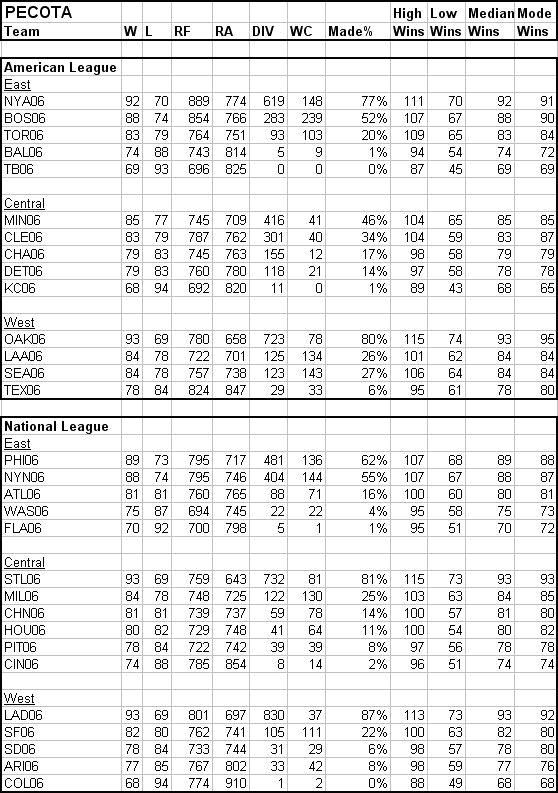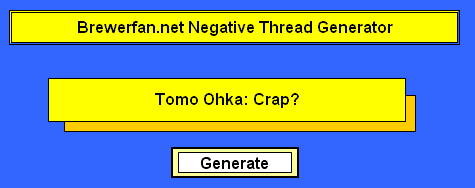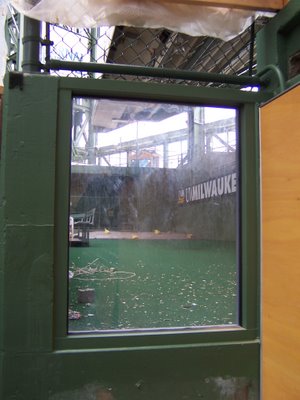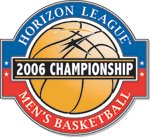There's a rule in baseball that if a veteran has questionable spring training stats someone HAS to overreact. This rule is worshiped in Brewer Nation, where fans have learned long ago that if something can go wrong it will. This year's victim? Brady Clark:
AB BB SO BA OBP SLG
Clark 26 9 11 .231 .474 .385
We'll pretend for a moment that 26 ABs are enough to be worth studying. Low BA, mediocre SLG, great OBP (being very dependant on walks) and a whole lot of K's. The question is, would this be a good line for an NL leadoff hitter over the course of a full season?
Using
linear weights, we know that in an average situation (average number of plate appearances for each of the 24 base/out situations) a walk is worth about 2/3rds of a single and a strike out is slightly worse than a BIP out. These run values are very dependant on the base/out situation, so a batter subjected to atypical situations will have atypical average values for their batting events.
Tangotiger
lists the run values for each of the 24 base/out situations. Let's focus in on the 4 stats of interest:
ROB Outs 1B BB SO OUT
--- 0 0.40 0.40 -0.26 -0.27
--- 1 0.27 0.27 -0.19 -0.18
--- 2 0.13 0.13 -0.11 -0.12
x-- 0 0.73 0.66 -0.39 -0.47
x-- 1 0.48 0.41 -0.32 -0.38
x-- 2 0.27 0.23 -0.25 -0.26
-x- 0 0.70 0.40 -0.48 -0.33
-x- 1 0.70 0.25 -0.38 -0.32
-x- 2 0.74 0.13 -0.35 -0.37
--x 0 0.50 0.41 -0.46 -0.27
--x 1 0.57 0.24 -0.60 -0.22
--x 2 0.85 0.16 -0.40 -0.33
xx- 0 0.97 0.76 -0.64 -0.47
xx- 1 0.94 0.69 -0.50 -0.56
xx- 2 0.89 0.35 -0.48 -0.45
x-x 0 0.82 0.51 -0.63 -0.48
x-x 1 0.82 0.44 -0.68 -0.42
x-x 2 0.96 0.28 -0.56 -0.50
-xx 0 0.84 0.31 -0.64 -0.48
-xx 1 1.00 0.24 -0.79 -0.50
-xx 2 1.46 0.19 -0.64 -0.63
xxx 0 1.21 1.00 -0.71 -0.52
xxx 1 1.25 1.00 -0.84 -0.69
xxx 2 1.54 1.00 -0.83 -0.79
Relative to a single, a walk's value is the least with runners on 2nd and 3rd and 2 out (1.46 runs for a single and .19 runs for a walk). This makes sense, since a single scores 2 runs fairly often in that situation, while a walk scores zero. Relative to a BIP out, a K is most costly with a runner on 3B (should be 2nd & 3B, I think) and 1 out (-0.6 runs for a K compared to -0.22 runs for a BIP out). If a high strikeout, high walk, low SLG player only saw those two base-out situations, his offensive contribution would be severly limited.
Let's look at the flip side. With no one on, the run value of a walk and single has to be equal, since both result in the same thing (runner on 1st). The cost of a SO and BIP-out are equal in that situation as well (can't advance a runner that doesn't exist). A SO and BIP-out are also equal when there are 2 outs (you can't advance a runner with a ground out if the inning is over). A player with high K and BB totals would maximize his worth is he were to only bat with no one on or with 2 out.
What about NL lead off hitters, though? We want to know what base/out situations an average NL lead off hitter sees most. Is it significantly different than the average batter? We know that about 20% of a leadoff hitter's PA will come with the bases empty (during his first AB of a game). Also, by following the weakest part of the lineup, a leadoff hitter will have more PA's with no one on and/or 2 out than the average batter. It would be fair to assume, then, that a lead off hitter doesn't face the average amount of each base-out situation.
To find out how atypical Clark's distribution of base/out situations were, let's find out what percentage of PAs
he had with either no one on or with 2 out in 2005. For comparison, I'll also list the same numbers for Carlos Lee, who hit out of the 4 post all year:
Clark Lee
Bases Empty: 72% 50%
empty and/or 2Out: 86% 73%
For 72% of Clark's PAs in 2005, a walk would have had the same run value as a single. For 86% of his PAs a strike out would have had the same cost as a normal out. I don't have the league average numbers handy but you can see that Clark's numbers are significantly different than Lee's.
On average, Lee's strike outs are more costly and his walks are less valuable than Clark's simply because of where they bat in the order. Where a batter hits in the lineup has a significant effect. If I had a player with low power and batting average and very high walk and K totals, I'd put him in the leadoff spot.
"The Book" covers this topic in great detail in their "batting (Dis)order chapter. After I read it I'll be sure to post more.

















